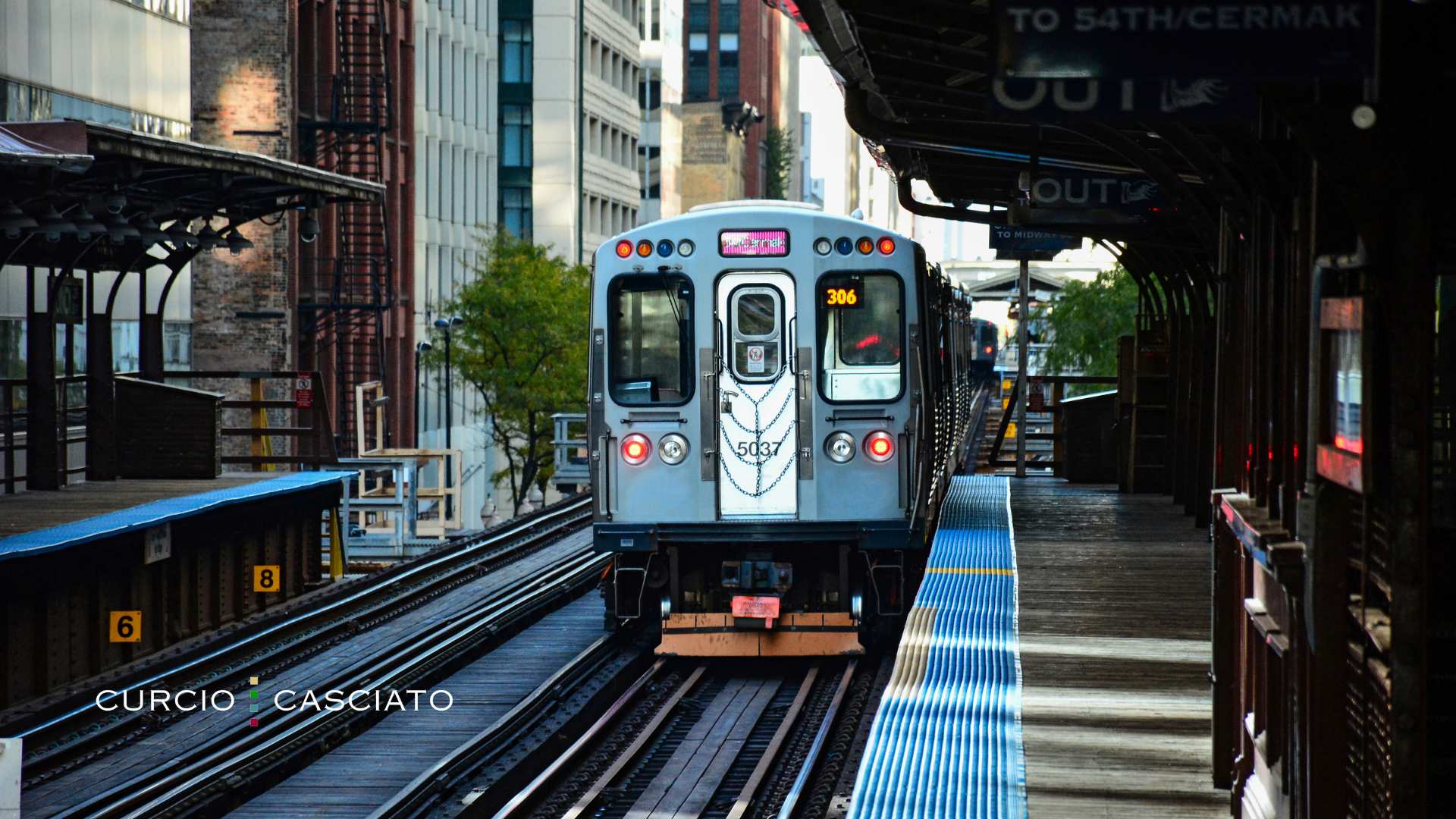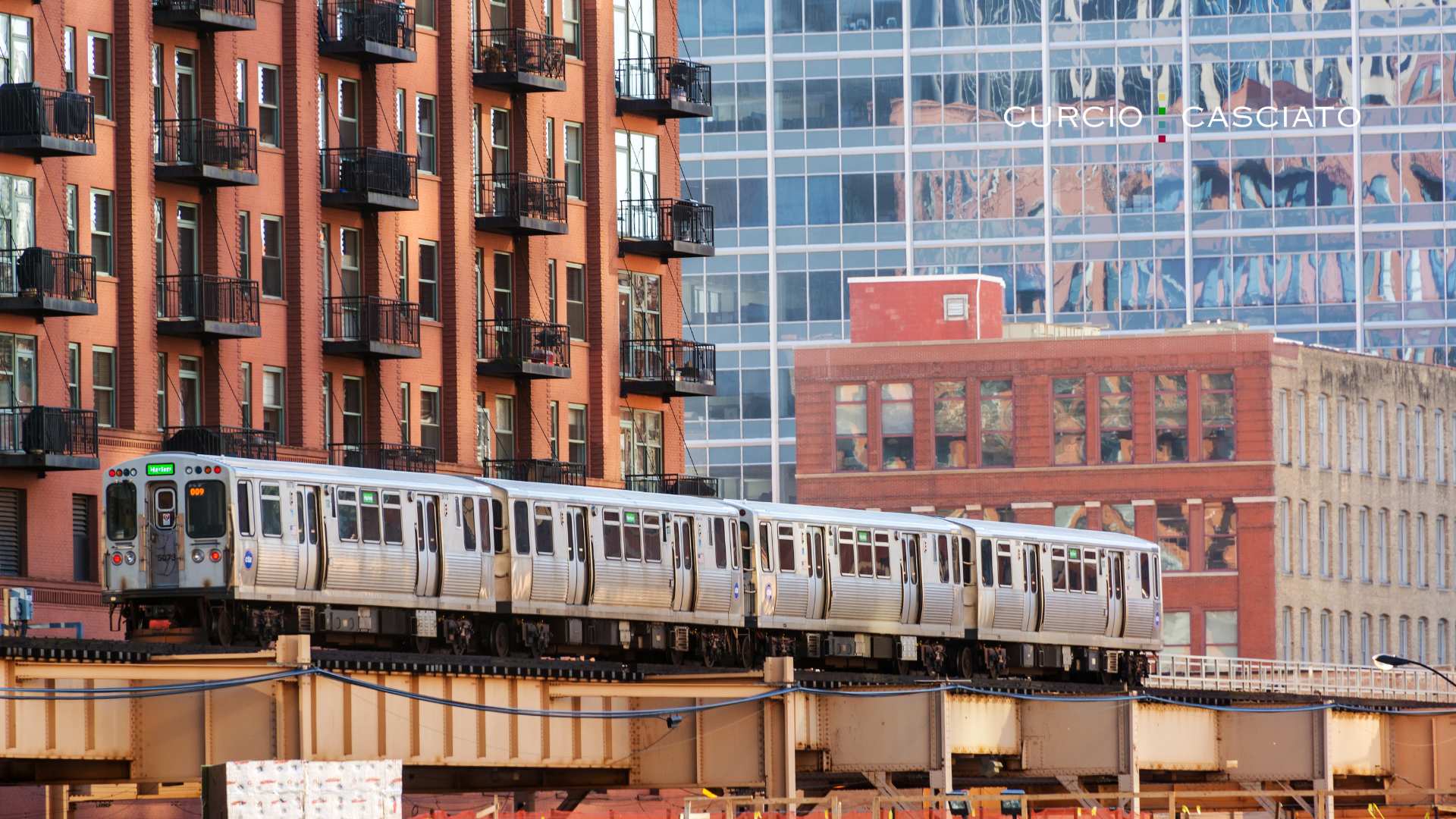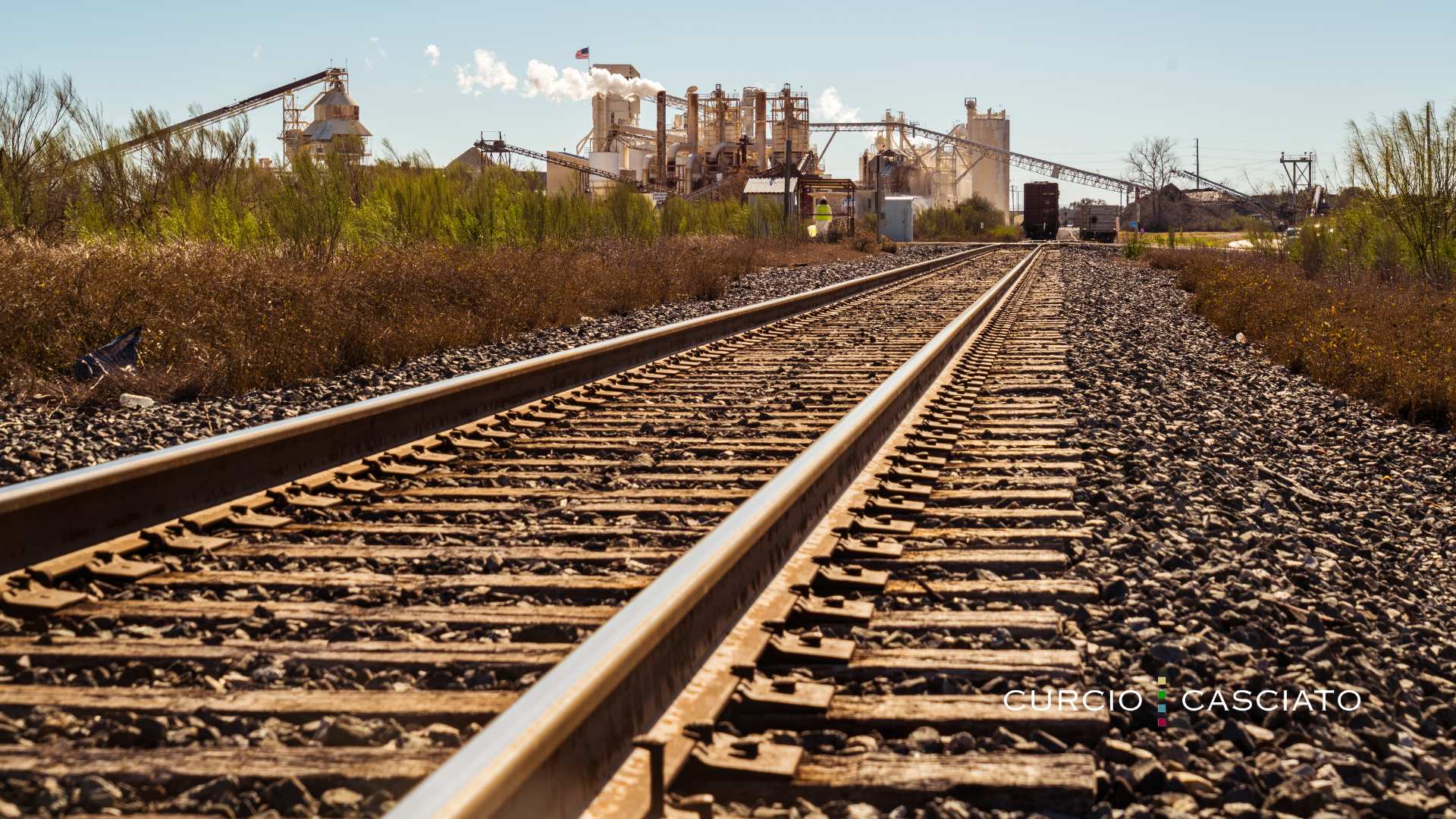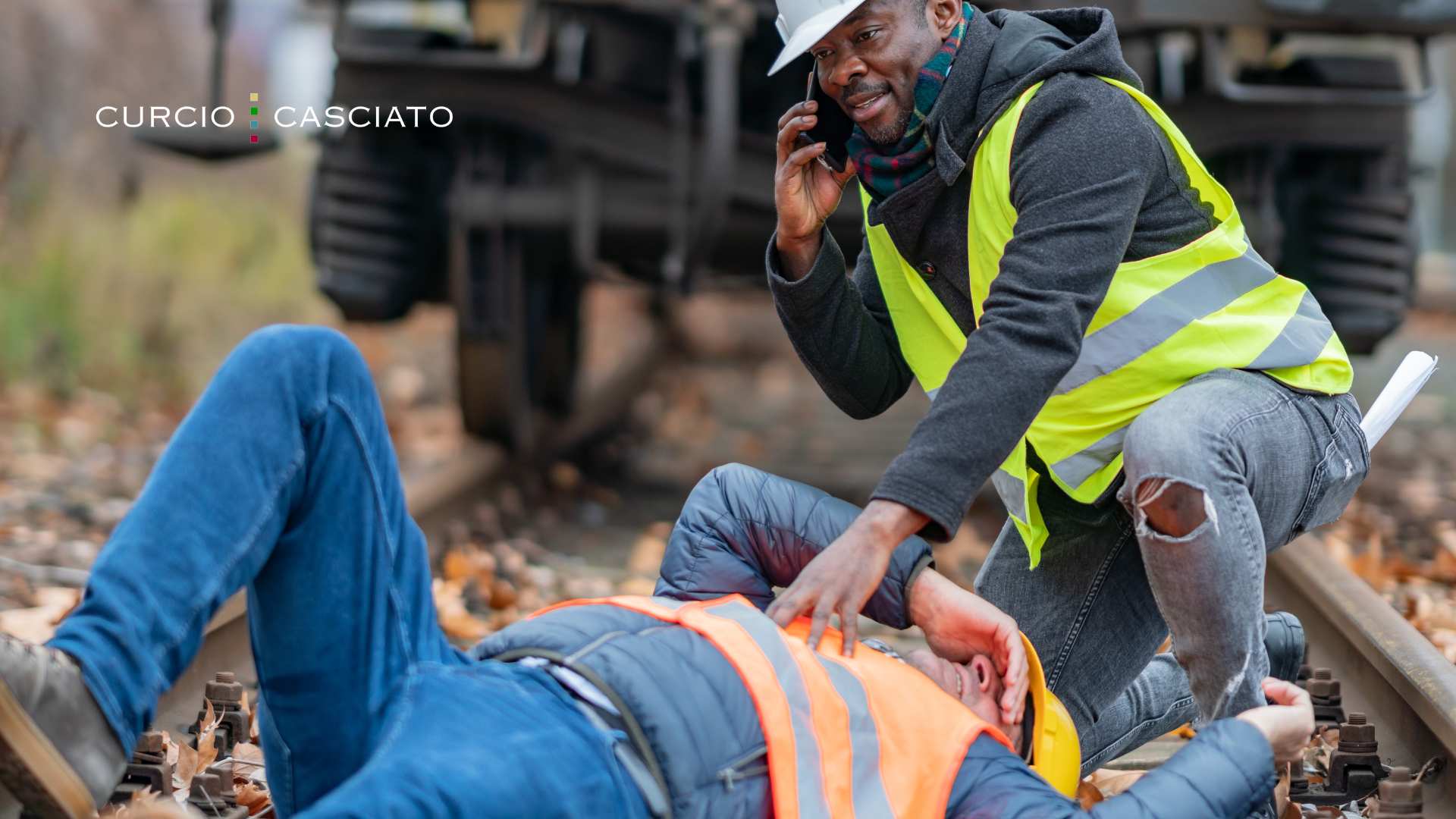CHICAGO TRAIN ACCIDENT LAWYER
Home » Practice Areas » Auto Accident » Train Accident
PRACTICE AREAS
The Chicago train accident lawyers at Curcio & Casciato have been helping victims recover financial compensation for serious injuries sustained by railroad accidents across the Chicagoland area for over 65 years. As top Chicago train accident attorneys, law firm partners Robert J. Curcio and Jack J. Casciato have secured multi-million dollar settlements for train accident victims, successfully litigating train accident cases for railroad workers to innocent children.
If you’ve been injured by a train accident in Chicago, IL, call an experienced personal injury lawyer at 312-321-1111 for a free consultation. Our train accident attorneys work on a contingency fee basis. So, you won’t owe any legal fees unless your train accident claim or FELA claim is successful.
Types of Train Accidents in Chicago
Common types of railroad and train accidents include:

Chicago Transit Authority Crash
When a Chicago Transit Authority crash occurs, passengers and bystanders can face serious injuries and significant disruptions to their daily lives. Securing the services of a knowledgeable Chicago train accident lawyer is crucial for navigating the complex legal landscape, ensuring that all parties affected by the crash receive the compensation they deserve for their injuries and losses.
Chicago Metra Train Crash
Accidents involving Chicago metra trains can cause immediate injuries and long-term emotional and financial hardships for victims. A skilled legal team is essential to navigate the train accident claim process for Metra Train accidents, as these cases often involve intricate details specific to the operation and management of Metra trains.
Chicago Amtrak Train Crash
Following an Amtrack train crash in Chicago, victims need prompt and effective legal representation. Experienced Chicago train accident attorneys with a deep understanding of both federal and state railroad industry regulations are crucial to advocate for the rights of those injured by Amtrack train accidents, ensuring that they receive full and fair compensation for their losses.
Train Derailment Chicago
Train derailments in Chicago are devastating events that can lead to severe injuries, loss of life, and significant property damage. Victims require immediate legal assistance from an experienced Chicago train accident lawyer team that specializes in the complexities of railway accident claims to navigate the aftermath and recover compensation for recovery and rebuilding.
To learn more about our Chicago train derailment attorney team, call our law offices today.
Chicago Railroad Accident
Railroad accidents in Chicago, particularly those resulting in railroad workers injured, demand a specialized approach to legal representation. Understanding the unique aspects of the railroad industry and the specific challenges a Chicago railroad worker faces is essential. An experienced train accident lawyer can provide comprehensive legal support, ensuring injured workers and their families receive the compensation and support they need after an accident.
Chicago Railroad Crossing Accident
Chicago railroad crossing accidents happen when the railroad crossing is poorly designed or has inadequate signage. Additionally overgrown vegetation can hide railroad tracks or warning signals entirely. Every railroad and train company understands that unmaintained railroad crossings will eventually lead to serious injuries.
Negligence in the design or maintenance of railroad crossings can lead to a personal injury claim if someone sustains physical injuries from a railroad accident.
What Causes Train Accidents in Chicago?
In most cases, train accidents happen because of negligence at many levels. While the most common type of negligence is human error, the railroad or train company, train manufacturer, or government agency can be held accountable for negligence.

Human error in railway operations can stem from various sources, including distracted or fatigued train operators, failure to follow safety protocols, or improper training, making individuals directly involved in the train’s operation potentially liable for accidents and resulting damages.
Railroad or train companies may be held liable if their negligence, such as poor maintenance of train tracks or motor vehicles, inadequate safety measures, or insufficient employee training, leads to an accident, highlighting the importance of rigorous adherence to safety standards.
Liability can extend to the train manufacturer or owner if defects in the train’s design, manufacturing flaws, or failure to provide adequate warnings and instructions contribute to an accident, emphasizing the need for strict quality control and transparent communication.
Common Train Accident Injuries in Chicago
Injury from railroad accidents can be devastating. Our Chicago train accident lawyers help passengers and railroad workers who have sustained the following physical injuries and more:
Train accidents in Chicago can exert tremendous force on the human body, often resulting in fractured and broken bones. This serious injury can range from simple fractures that require minimal treatment to complex breaks that necessitate surgery and lengthy rehabilitation periods. The cost of a broken bone is often higher than railroad workers expect.
Traumatic brain injuries (TBI) are among the most severe outcomes of train accidents, with the potential to significantly alter a victim’s life. TBIs can range from mild concussions with temporary symptoms to severe brain damage leading to long-term cognitive, physical, and behavioral impairments. Contact a Chicago TBI lawyer to schedule a free case evaluation.
The impact and jolting movements of train accidents frequently cause various types of back injuries, including whiplash, herniated discs, and other spinal damage. These injuries can lead to chronic pain, reduced mobility, and, in severe cases, permanent disability. Whether you’re a passenger or an injured worker, a Chicago spinal cord injury lawyer can help you secure fair compensation.
Train accidents in Chicago can cause injuries severe enough to lead to short or long-term paralysis. Whether temporary or permanent, paralysis dramatically affects an individual’s quality of life, often necessitating significant adjustments to living arrangements, and ongoing medical expenses. A Chicago paralysis lawyer can help you as an injured worker secure maximum compensation for injuries.
How a Chicago Train Accident Attorney Can Help
Railroad companies dedicate an enormous amount of their budgets to dealing with train accident cases. Railroad companies and their insurers hire the most experienced train accident attorneys to minimize their liability, often ignoring the railroad negligence that caused the accident.

So, all victims of train accidents need experienced personal injury lawyers. Train accidents are incredibly traumatic for injured passengers, drivers, and railroad workers. The Chicago train accident attorneys at Curcio Law Offices can help you with your medical bills, lost income, and other damages by assessing liability.
While we focus on the legal complexities of your case, you can focus on getting the medical attention you deserve and recovering.
Compensation for Chicago Train Crashes
In many circumstances, train accidents result from negligence from a railroad company or an engineer. Injured victims can recover compensation for economic and non-economic damages due to their suffering to cover medical expenses and financial losses sustained.
A train accident lawyer at Curcio and Casciato can help you pursue maximum compensation for the following and more:
- Past medical bills
- Future medical expenses
- Lost wages and earning potential
- Pain and suffering
- Loss of consortium
Sometimes, a train accident victim can also receive punitive damages from their personal injury claim. The goal of punitive damages is to prevent anyone in the railroad industry from engaging in gross negligence in the future.
Chicago Railroad Worker Injuries
Unfortunately, Chicago railroad worker injuries are common due to the dangerous nature of railroad work. Railroad workers injured on the job should typically pursue a FELA lawsuit instead of opting for personal injury or workers’ compensation claims.
If you’re an injured worker in Chicago who thinks you may be eligible for a FELA claim, contact a Chicago FELA lawyer for a free consultation.
FELA Claims for Chicago Railroad Worker Injuries (Federal Employers Liability Act)

Congress created the Federal Employers Liability Act in 1908 in response to hundreds of injured railroad workers.
The Federal Employers Liability Act allows injured railroad to sue their employers for negligence that led to their injuries. FELA claims can cover a wide range of damages, including healthcare expenses, lost pay, and compensation for pain and suffering.
FELA claims can provide more benefits and compensation for injured railroad workers than workers’ comp. An injured worker who files a FELA claim may receive 100% of their lost wages. Additionally, FELA claims can provide damages for pain and suffering while injured worker claims under workers’ compensation generally cannot.
Chicago Train Accident Lawyers
The experienced Chicago train accident lawyers at Curcio & Casciato have the experience needed to handle even the most complex train and railroad accident cases. Contact our law firm at 312-321-1111 for a free case review.


